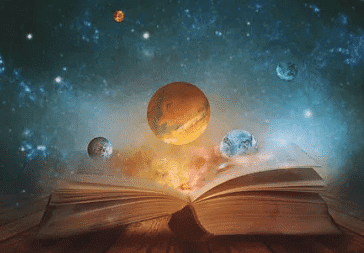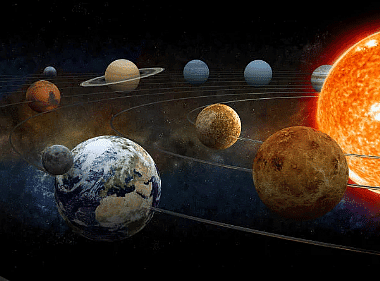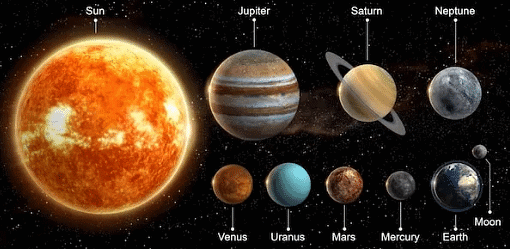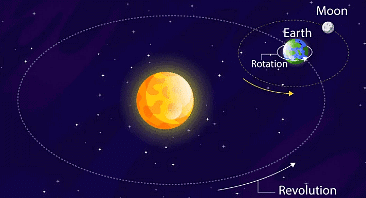Class 6 Exam > Class 6 Notes > Olympiad Notes: Earth and Universe
Olympiad Notes: Earth and Universe - Class 6 PDF Download
| Table of contents |

|
| The Universe |

|
| The Solar System |

|
| The Planets |

|
| Classification of Planets |

|
| Planets in Our Solar System |

|
| Earth’s Movements |

|
The Universe

- Definition and Scope: The universe encompasses everything known, including planets, stars, galaxies, and more.
- Age: It is approximately 13.8 billion years old.
- Composition: Comprises billions of galaxies, each containing billions or trillions of stars.
- Our Galaxy: We reside in the Milky Way galaxy, one among countless others in the universe.
The Solar System

- Components: Includes the Sun, eight planets, moons, asteroids, comets, and smaller objects.
- The Sun: Central to our solar system.
- Purpose of Study: Understanding the solar system sheds light on planetary formation and evolution, conditions for life, and celestial diversity.
Question for Olympiad Notes: Earth and UniverseTry yourself: What is the age of the universe?View Solution
The Planets

- Nature of Planets: Planets are celestial bodies orbiting stars, like Earth orbits the Sun.
- Number in Solar System: There are eight recognized planets in our solar system, each with unique characteristics.
Classification of Planets
Terrestrial Planets
- Composition: Composed of rocks and metals with solid surfaces.
- Location: Closer to the Sun.
- Examples: Mercury, Venus, Earth, Mars.
Jovian Planets
- Size: Larger than terrestrial planets.
- Composition: Mostly hydrogen and helium gases.
- Location: Farther from the Sun.
- Features: Possess rings and are similar to Jupiter.
- Examples: Jupiter, Saturn, Uranus, Neptune.
Dwarf Planets
- Definition: Orbit the Sun but are smaller and less influential gravitationally.
- Characteristics: Can be round or oddly shaped.
- Examples: Pluto, Ceres.
Question for Olympiad Notes: Earth and UniverseTry yourself: Which type of planet is composed of rocks and metals with solid surfaces?View Solution
Planets in Our Solar System
Mercury
- Size: Smallest in our solar system.
- Orbital Characteristics: Closest to the Sun, fastest orbit.
- Surface and Moons: Rocky, no moons.
- Temperature: Extreme, uninhabitable.
Venus
- Comparison with Earth: Similar in size, but extremely hot with a toxic atmosphere.
- Rotation and Orbit: Slow rotation, orbits Sun faster than Earth.
- Surface: Solid, with volcanic features.
- Unique Rotation: Rotates backwards.
Earth
- Uniqueness: Only known planet with life.
- Size: Largest terrestrial planet.
- Surface and Moon: Dynamic surface, one moon.
- Atmosphere: Protects from meteoroids.
Mars
- Characteristics: Cold, desert-like, thin atmosphere.
- Rotation and Orbit: Similar day length to Earth, longer year.
- Surface: Rocky, red due to iron oxidation.
- Moons: Two, Phobos and Deimos.
Jupiter
- Size: Largest planet.
- Rotation and Orbit: Fast rotation, long orbital period.
- Nature: Gas giant, mostly hydrogen and helium.
- Moons and Rings: 95 moons, ring system.
- Notable Feature: Great Red Spot.
Saturn
- Distinguishing Feature: Prominent ring system.
- Nature: Gas giant.
- Moons: 146 moons.
Uranus
- Unique Rotation: Rotates on its side.
- Nature: Ice giant.
- Moons and Rings: 27 moons, 13 rings.
Neptune
- Location: Farthest from the Sun.
- Features: Cold, windy, 14 moons, ring system.
- Rotation and Orbit: Fast rotation, long orbital period.
Earth’s Movements

Rotation
- Definition: Earth's spinning around its axis.
- Consequence: Causes day and night, affects shadow length.
Revolution
- Definition: Earth's movement around the Sun.
- Impact: Results in different seasons.
Tilted Axis
- Nature: Axis is tilted, not upright.
- Effect: Causes seasonal changes due to varying sunlight exposure.
Related Searches



















